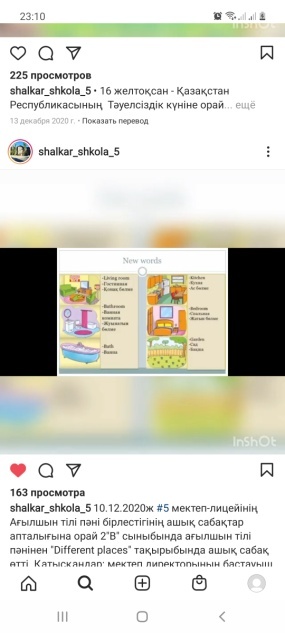|
Long-term
plan Unit 5: Health and
body
|
School: School-lyceum
№5
|
|
Date: 17.11.2020
|
Teacher name: Kalzhanova
D.K.
|
|
Grade: 2 «V»
|
Number present:
|
absent:
|
|
Theme of the lesson:
|
Our body
|
|
Learning objectives
|
2. R1recognise, sound and name
the letters of the alphabet
2.W3 write familiar words to
identify people, places and objects
2.S3 pronounce familiar words
and expressions intelligibly
2.L1 recognise short basic
instructions for a limited range of classroom routines spoken
slowly and distinctly
|
|
Lesson objectives
|
All learners will be able
to:
Most learners will be able
to:
Some learners will be able
to:
- complete all worksheets correctly.
|
|
|
|
Success criteria
|
Learners have met this
learning objective if they can:
- pronounce all alphabet
letters without mistakes
- write, pronounce and spell
vocabulary parts of the body
-do most of tasks
correctly.
|
|
Value links
|
Ls will work together as a
group showing respect and being polite with each
other.
|
|
Cross curricular
links
|
Primary Science
|
|
ICT skills
|
PPT, Video, the use of
whiteboard
|
|
Previous learning
|
Body parts 2/ have got
structure
|
|
Plan
|
|
Planned timings
|
Planned activities
|
Resources
|
|
Beginning
10 mins
|
Learners are introduced the
success criteria of the lesson.
Warm
up
Teacher gathers learners into
a circle and roll the cube and say a word with that letter.
example: h – hair, E – eyes, etc.
Learner divide into three
groups with coloured thread.
|
Cube with
letters
|
|
Middle
25
mins
|
Task 1
Task
2
Physical Exercises “Head,
shoulders, knees and toes”
Task
3
|
Presentation
Worksheet1
Worksheet
2
https://www.youtube.com/watch?v=h4eueDYPTIg
Worksheet 3
|
|
End
5 mins
|
Teacher gives feedback for
learners. This might be done on the blackboard. Learners reflect on
their learning:
-
Can they listen and
say?
-
Can they read and
write?
-
Can they do
everything?
H/T: to learn all
words
|
Coloured papers and parts of
head
|
|
Additional
information
|
|
Differentiation – how do
you plan to give more support? How do you plan to challenge the
more able learners?
Support for weaker students:
working in pairs/groups,
individually
Challenges for moreable
students: Encouraged to do more writing; assist weaker
students.
|
Assessment – how are you
planning to check learners’
learning?
Monitoring
Checking the
task
Feedback on the
work
Working with PPT whole and
individual answers
|
Health and safety check
ICT links
Video,
PPT
|
|
Differentiation can be
by task, by outcome, by individual support, by selection of
teaching materials and resources taking into account individual
abilities of learners (Theory of Multiple Intelligences by
Gardner).
Differentiation can be
used at any stage of the lesson keeping time management in
mind
Differentiation by task, by
outcome, by individual support, by selection of teaching materials
and resources taking into account individual abilities of
learners.
|
Health promoting techniques
Breaks and physical
activities used.
Points from Safety rules
used at this lesson.
|
|
Reflection
Were the lesson
objectives/learning objectives realistic? Did all learners achieve
the LO?
If not,
why?
Did my planned differentiation
work well?
Did I stick to
timings?
What changes did I make from
my plan and why?
|
Use the space below to
reflect on your lesson. Answer the most relevant questions from the
box on the left about your
lesson.
|
|
|
|
Summary
evaluation
What two things went really
well (consider both teaching and
learning)?
1:
2:
What two things would have
improved the lesson (consider both teaching and
learning)?
1:
2:
What have I learned from
this lesson about the class orachievements/difficulties of
individuals that will inform my next
lesson?
|
















